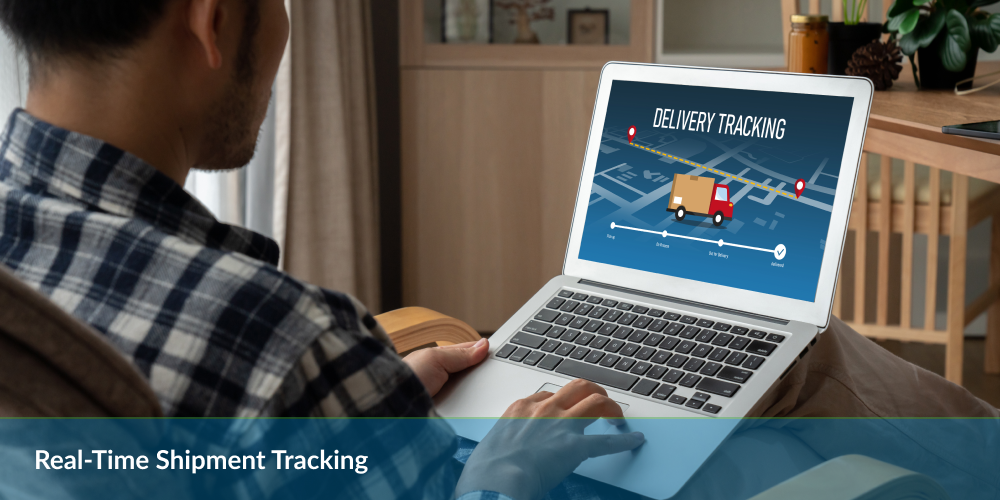 Real-Time Shipment Tracking Technologies in Vietnam: Enhancing Transparency and Efficiency
Real-Time Shipment Tracking Technologies in Vietnam: Enhancing Transparency and Efficiency
As Vietnam cements its position as a global manufacturing and logistics hub, real-time shipment tracking technologies are playing a pivotal role in streamlining supply chains, improving transparency, and enhancing customer satisfaction. From RFID and GPS systems to AI-powered logistics platforms, these technologies are reshaping how domestic and international shipments are managed in the country.
In this blog, we explore how Vietnam is adopting real-time shipment tracking, the benefits for importers, exporters, and logistics agents, and how your business can leverage this growing ecosystem.
🚚 Why Real-Time Shipment Tracking Matters
Real-time tracking in logistics refers to the ability to monitor the exact location, status, and condition of a shipment at any point during its journey — from warehouse to end destination. This visibility is vital for:
-
Reducing delivery delays
-
Improving route efficiency
-
Minimizing theft and loss
-
Enhancing trust and communication with clients
-
Supporting data-driven logistics planning
In a country like Vietnam, where exports exceeded USD 355 billion in 2023 and continue to grow, supply chain visibility is a competitive advantage.
📡 Core Technologies Used in Vietnam’s Shipment Tracking
1. GPS (Global Positioning System)
GPS remains one of the most widely used technologies for tracking vehicles and containers. Many Vietnam-based logistics firms now equip fleets with GPS for:
-
Real-time vehicle tracking
-
Route optimization
-
Fuel efficiency monitoring
-
Delivery status updates
2. RFID (Radio-Frequency Identification)
RFID tags are used extensively in warehouse and cargo management across Vietnam’s ports and fulfillment centers. These tags can:
-
Identify goods without direct line-of-sight
-
Trigger alerts for missing or misrouted items
-
Automate warehouse inventory checks
3. IoT (Internet of Things) Sensors
IoT sensors provide valuable data on environmental conditions like temperature, humidity, and vibration. This is especially important for Vietnam’s cold chain logistics and agricultural exports.
Learn more: Cold Chain Logistics in Vietnam
4. AI & Machine Learning
Advanced logistics platforms in Vietnam now use AI algorithms to:
-
Predict delays due to weather or traffic
-
Suggest alternative routes in real-time
-
Automate exception handling for disrupted shipments
These tools are commonly used by third-party logistics providers (3PLs) and shipping agents.
⚓ Adoption Across Major Ports and Hubs
Vietnam’s largest logistics gateways, such as Cat Lai Port (HCMC) and Hai Phong Port, have implemented digital tracking and port community systems to manage container traffic. Major courier services like Viettel Post, GHN, and VNPost also provide live shipment tracking to customers and businesses alike.
For international importers/exporters using Vietnam Agent Services, this technology ensures transparency and peace of mind when moving goods across provinces and borders.
🏢 Leading Companies & Platforms in Vietnam
Several logistics tech startups and established firms have introduced real-time tracking platforms that serve SMEs and global brands alike:
-
Abivin – Offers AI-powered route optimization and fleet management
-
Logivan – Connects shippers with truckers and enables shipment monitoring
-
Bee Logistics – Offers container tracking, cargo status updates, and customer dashboards
-
SOTRANS Group – Provides tracking through ERP-integrated shipping platforms
These solutions are rapidly expanding in Ho Chi Minh City, Hanoi, Da Nang, and across Vietnam’s special economic zones.
📈 Benefits for Global Companies Working in Vietnam
-
Greater Transparency
Customers and stakeholders are continuously updated on the shipment’s status, improving trust and customer satisfaction. -
Operational Efficiency
Real-time data allows for better coordination between warehouse, shipping, customs clearance, and last-mile delivery teams. -
Risk Reduction
Proactive alerts help businesses avoid spoilage, delays, theft, and damage — especially for sensitive cargo like electronics or perishable goods. -
Enhanced Communication
With tracking portals and mobile apps, businesses can access key information without relying on manual calls or paperwork.
🛠️ Challenges Still Facing the Industry
Despite these advancements, real-time shipment tracking still faces a few obstacles in Vietnam:
-
Limited infrastructure in rural areas
-
High setup costs for SMEs
-
Inconsistent network coverage
-
Integration issues with international systems
However, with Vietnam’s ongoing investment in digital transformation and its National Logistics Development Plan, these issues are being systematically addressed.
🌍 How Vietnam-Agent.com Supports Tracking & Transparency
At Vietnam-Agent.com, we assist foreign businesses in implementing reliable end-to-end shipment tracking through our agent network, logistics partners, and digital systems.
Our services include:
-
Sourcing manufacturers with digital warehouse capabilities
-
Working with 3PLs offering real-time tracking
-
Coordinating with customs for real-time clearance updates
-
Providing status updates via email or API integration
🔮 Future Outlook: Smart Logistics by 2030
Vietnam aims to become one of Southeast Asia’s top smart logistics providers. With increasing investments in:
-
5G and IoT infrastructure
-
AI-powered supply chain analytics
-
National e-logistics platforms
-
Smart port technologies
…the landscape is set to become even more efficient, competitive, and globally integrated.
✅ Conclusion
Real-time shipment tracking technologies are no longer optional in Vietnam — they’re essential for maintaining speed, accuracy, and transparency in today’s fast-moving supply chain ecosystem. Whether you’re an importer, exporter, or e-commerce brand, these tools provide peace of mind and a serious edge in Vietnam’s growing logistics economy.
For businesses looking to establish operations or streamline supply chains in Vietnam, working with a local expert like Vietnam-Agent.com ensures smooth, tech-enabled logistics with minimal risk and maximum transparency.